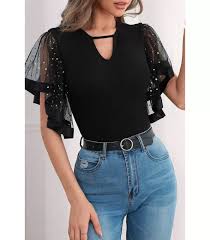Women’s dresses (mekot) have undergone substantial transformations throughout background, exhibiting social modifications, the latest fashions, and societal factors. From corsets and petticoats to miniskirts and maxi dresses, the advancement of women’s dresses is actually a exciting experience. Here’s a look at the developments and advancement shaping women’s dresses:
1. Historical Impacts:
Victorian Time: Dresses in the Victorian age were actually seen as a voluminous dresses, corsets, and necklines, emphasizing modesty and femininity.
1920s: The Roaring Twenties helped bring with regards to a trend in women’s fashion with the roll-out of flapper dresses, presenting fallen waists, reduce silhouettes, and reduced hemlines, reflecting the newfound mindset of liberation and independence.
1950s: The 1950s saw the increase of the iconic Dior’s New Look, which celebrated femininity with complete skirts, nipped-in waists, and hourglass silhouettes, epitomizing article-conflict charisma and elegance.
2. Modern Tendencies:
1960s: The 1960s seen the introduction of your mini dress, popularized by designers like Mary Quant. Shorter hemlines, strong printing, and A-line silhouettes mirrored the youth tradition and modern behaviours of the time.
70s: The 1970s appreciated bohemian style with running maxi dresses, peasant blouses, and psychedelic images, relying on the counterculture activity along with a desire for liberty and self-expression.
21st Century: These days, women’s dresses are getting to be far more different and comprehensive, catering to a wide range of entire body kinds, choices, and life styles. Styles including bodycon dresses, slip dresses, and athleisure-motivated dresses have became popular, supplying overall flexibility and comfort without limiting type.
3. Sustainable Design:
Rise of Eco-Helpful Supplies: With increasing understanding of ecological problems, there’s a move towards lasting and eco-pleasant materials in dressmaking, such as organic and natural cotton, bamboo, and reprocessed fabrics.
Slow Design Activity: The slow trend motion focuses on high quality around amount, encouraging customers to get timeless and durable dresses that stand the test of time, lowering the environment affect of fast design.
4. Potential Perspective:
Technological innovation Incorporation: Developments in modern technology, for example 3D printing and smart textiles, are revolutionizing dress style and developing processes, providing impressive solutions for modification, match, and features.
Comprehensive Reflection: There’s an increasing requirement for range and inclusivity inside the design business, ultimately causing higher representation of different entire body sorts, ethnicities, and identities in dress styles and marketing and advertising promotions.
To summarize, the advancement of women’s dress (mekko) demonstrates the ever-changing dynamics of design, tradition, and society. From historical factors to modern day trends plus a focus on sustainability and inclusivity, women’s dresses continue to progress, modify, and stimulate new decades of trend lovers.
